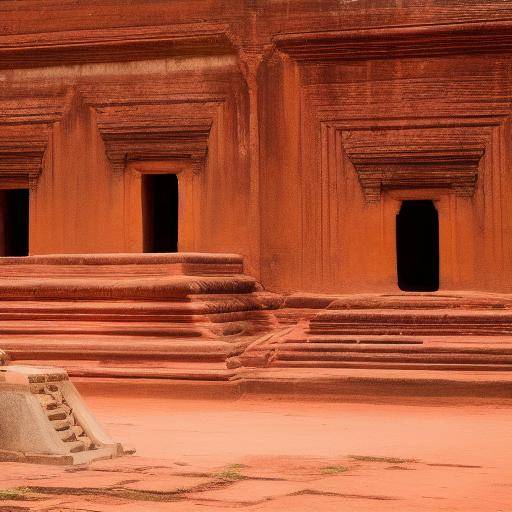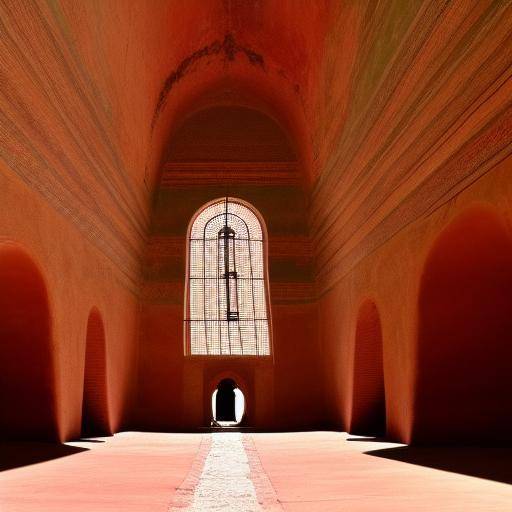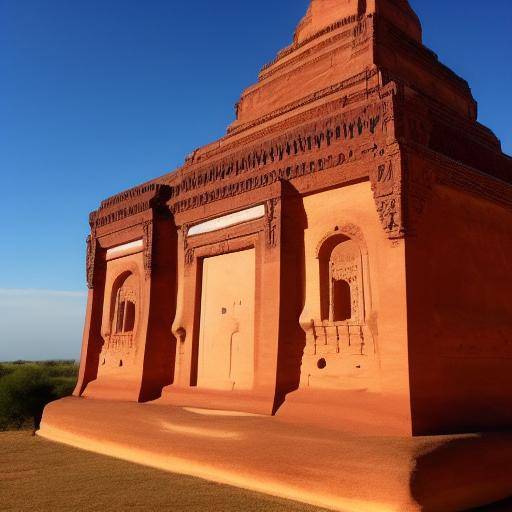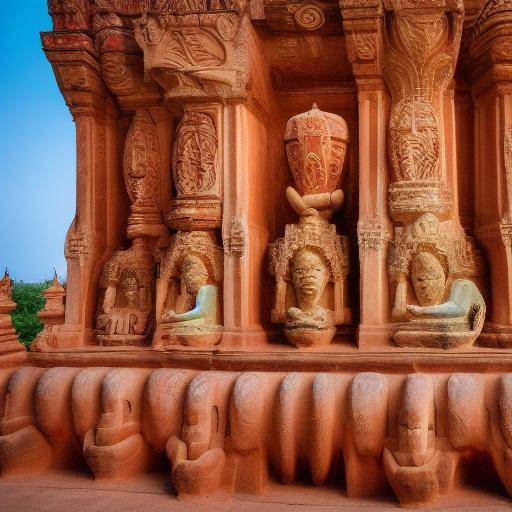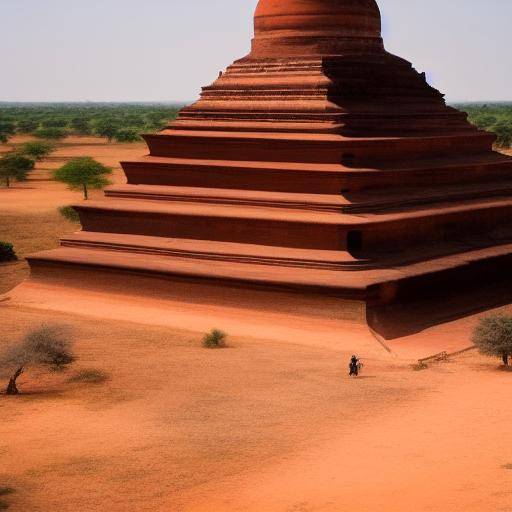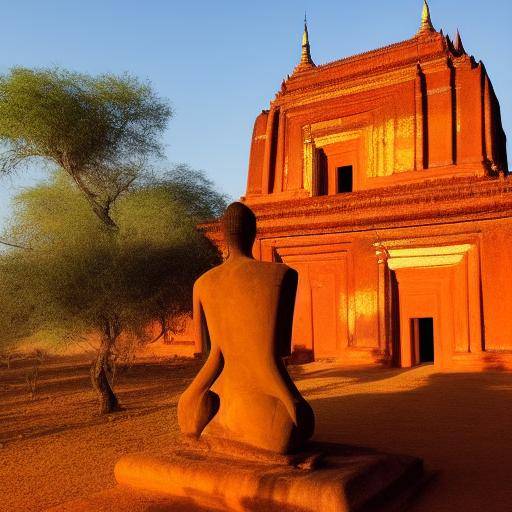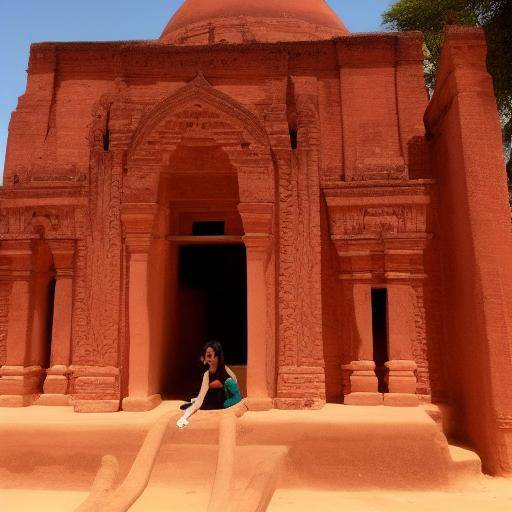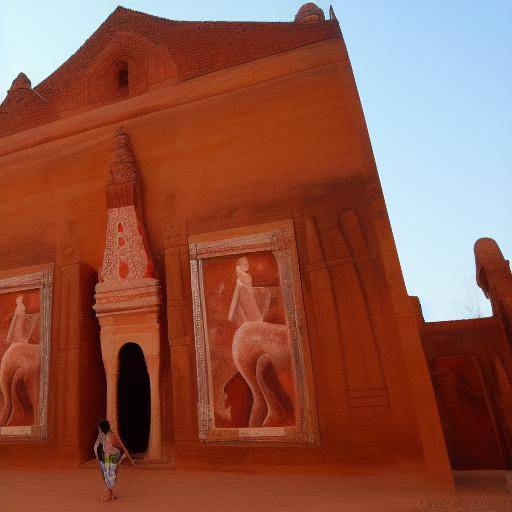
Burmese art is a unique manifestation reflected in the temples of Bagan, located in a remote valley that was in its day the spiritual and political heart of Myanmar. The rich history and cultural heritage of this place offer a fascinating view of Burmese creativity and spirituality. In this article, we will explore the artistic wealth of the temples of Bagan, the uniqueness of Burmese art and its evolution over the centuries.
Introduction
The temples of Bagan, formerly known as Pagan, are one of the most captivating destinations in Myanmar. With its thousands of temples distributed in an extensive landscape, Bagan is a tangible testimony of the rich artistic and cultural heritage of this region. We will explore from the majestic murals that decorate the temples to the splendid sculptures that portray Burmese devotion and spirituality. Join us on this journey to discover the beauty and meaning of art in the temples of Bagan.
History and Background
To understand the importance of art in the temples of Bagan, it is crucial to immerse yourself in the history and background of this place. During the peak of the kingdom of Pagan, between the 11th and 13th centuries, thousands of temples and pagodas were built in the region. This flourishing of religious architecture marked the beginning of a golden era for Burmese art. The temples of Bagan not only served as places of worship, but also as canvases for artistic expression. The murals that adorn the walls of these temples tell mythological stories, scenes of everyday life and religious teachings, providing a unique vision of life in the ancient Burma.
Exploration in Deep
Entering into the art of the temples of Bagan is entering into a universe of colors, shapes and symbols that convey the very essence of Burmese culture. The sculptures that adorn the temples of Bagan reflect the artistic mastery of Burmese sculptors, capturing the essence of spirituality through each detail meticulously carved. The interaction between architecture, painting and sculpture in these temples offers an integral vision of art in the region, revealing the deep connection between artistic expression and religious beliefs.
Comprehensive review
In exploring the art of the temples of Bagan, the opportunity arises to carry out a comprehensive assessment of its influence and legacy in Burmese art. The temples of Bagan not only serve as witnesses of the artistic grandeur of the past, but also continue to inspire contemporary artists. The cultural wealth of Myanmar is reflected in every work of art that adorns these temples, and its influence extends far beyond the borders of the country, enriching the global artistic panorama.
Comparative analysis
When comparing Bagan with other similar sites in Southeast Asia, its uniqueness is evident in terms of art, architecture and spirituality. While Angkor Wat in Cambodia stands out for its grandeur, the temples of Bagan captivate with its serene beauty and its connection to the surrounding nature. Burmese art is distinguished by its distinctive style, which merges Indian, Chinese and local influences to create a truly unique artistic expression.
Practical Tips and Accessible Recommendations
If you want to immerse yourself in Burmese art and culture, a visit to the temples of Bagan is essential. We recommend exploring these temples with an expert guide that can provide an enriching perspective on the meaning and history behind each work of art. In addition, carrying a camera to capture the essence of art in Bagan temples can be a rewarding experience and a way to preserve these artistic treasures for future generations.
Perceptions of Industry and Expert Reviews
The temples of Bagan and Burmese art have been the object of interest and study by experts in art, architecture and culture. His views shed light on the importance of art in understanding and preserving Burmese cultural identity. Through multidisciplinary research, art has been appreciated in the temples of Bagan from various perspectives, highlighting its relevance both locally and internationally.
Cases and Applications in Real Life
Art in the temples of Bagan is not only a historical legacy, but also a vibrant testimony of human creativity. Its influence extends to different areas, from inspiration in contemporary works to the promotion of sustainable cultural tourism in Myanmar. Studying practical cases involving Burmese art offers an enriching view of its multifaceted impact on society and culture.
Future Trends and Predictions
As Myanmar opens to the world, art in Bagan temples is gaining renewed relevance in the global context. The preservation and promotion of these artistic treasures are expected to remain priorities both locally and internationally. In addition, Burmese art is attracting the attention of collectors, academics and art enthusiasts, which augur a vibrant future for their appreciation and study.
Conclusions
Art in the temples of Bagan is much more than a mere aesthetic expression; it is a tangible link to Myanmar's rich cultural heritage. Its intricate beauty and profound meaning offer a window to the spirituality, creativity and history of this region. Through the understanding and appreciation of art in the temples of Bagan, it is possible to transcend the barriers of time and distance to connect with a form of artistic expression that will last through the centuries.
Frequently asked questions
1. What is the importance of art in the temples of Bagan for the cultural identity of Myanmar?
Art in the temples of Bagan is fundamental to the cultural identity of Myanmar, as it represents centuries of tradition, religious beliefs and artistic expression unique to this region.
2. What significant differences exist between art in the temples of Bagan and other artistic manifestations of Southeast Asia?
Art in the temples of Bagan is distinguished by its fusion of Indian, Chinese and local influences, providing a unique aesthetic and symbolism that stand out in comparison to other manifestations of Southeast Asia.
3. What is the best way to preserve art in Bagan temples for future generations?
The preservation of art in the temples of Bagan requires a delicate balance between sustainable tourism, the preservation of temples and the implementation of appropriate policies to ensure their long-term protection.
4. How can art in the temples of Bagan inspire contemporary creativity and art?
Art in the temples of Bagan has served as a source of inspiration for contemporary artists, influencing contemporary forms of artistic expression that nurture the rich artistic tradition of Myanmar.
5. What is the impact of tourism on the preservation of art in the temples of Bagan?
The impact of tourism on the preservation of art in the temples of Bagan is a complex theme that requires careful consideration, as the balance between conservation and access is fundamental for its protection.
6. What aspects of art in the temples of Bagan should visitors know before their journey?
Visitors should be informed about the cultural and religious importance of art in the temples of Bagan, as well as the guidelines for its conservation and respect during their visit.
In short, the temples of Bagan have an incomparable treasure of Burmese art that transcends the barriers of time and space. Its profound cultural and spiritual meaning makes them a must-see destination for lovers of art, history and culture. In exploring these temples, visitors have the opportunity to immerse themselves in an exceptional artistic legacy that has endured over the centuries, enriching our understanding of Myanmar's rich artistic tradition.
In conclusion, art in the temples of Bagan is a living reflection of the very essence of Myanmar, an expression of its cultural heritage rooted in history, spirituality and artistic mastery. In appreciating and preserving these artistic treasures, we contribute to keeping Myanmar's rich heritage alive for future generations, ensuring that art in Bagan temples continues to inspire and marvel all those who discover it.
For more information on the temples of Bagan, Burmese art and the rich culture of Myanmar, do not hesitate to contact local experts and explore additional sources such as museums, academic institutions and specialized publications. Together, we can continue to celebrate and share the beauty of art in the temples of Bagan with the world.
With this, we concluded this tour of art in the temples of Bagan, trusting that you have acquired a new appreciation for the deep connection between art, history and spirituality in this magnificent corner of Myanmar.
Thank you for sharing this trip with us!

